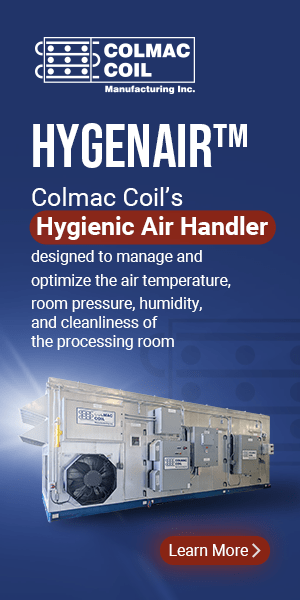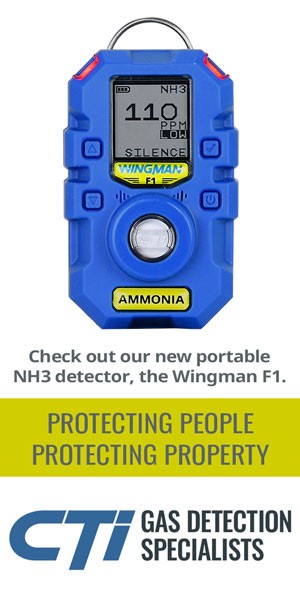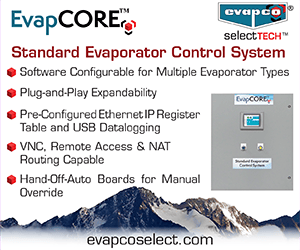The Codes and Standards Conundrum
BY BENT WIENCKE, ENGINEERING MANAGER REFRIGERATION, NESTLE USA
In discussions on which codes and standards should be adhered to, I am all too often reminded of Daniel Patrick Moynihan who is the former U.S. Senator attributed with saying “Everyone is entitled to his own opinion, but not to his own facts.”Borrowing from this logic, the codes and standards we must adhere to should not be opinion, but they should instead be fact-based to ensure any scrutiny is passed and potential code violations avoided.
All too often, the common opinion in our industry is that we should simply follow the latest version of IIAR-2 and ASHRAE 15, and by doing so we are covered.
Not so fast, there is a little more to it than this. To get a handle on codes and standards, we must first gain a better understanding of the terms, commonly, loosely, and interchangeably used in these discussions.
First, let’s define what, exactly, a standard is.
“A standard is a document that applies collectively to codes, specifications, recommended practices, classifications, test methods, and guides, which have been prepared by a standards developing organization or group, and published in accordance with established procedures.” (Source: SES-1, “Recommended Practice for Standards Designation and Organization”)
Now, let’s consider . . . what is a consensus standard?
“Consensus standards are standards developed through the cooperation of all parties who have an interest in participating in the development and/or use of the standards. Consensus requires that all views and objections be considered, and that an effort be made toward their resolution. Consensus implies more than the concept of a simple majority but not necessarily unanimity.” (Source: ANSI’s “Standards Management: A Handbook for Profit”) 1)
From an understanding of standards, we can move to codes, and ask . . .what is a code?
“A code is a collection of mandatory standards, which has been codified by a governmental authority and thus become part of the law for the jurisdiction represented by that authority such as the Uniform Building Code and National Electrical Code.” (Source: ANSI’s “Standards Management: A Handbook for Profit”) 1)
And finally, what is a model code?
A model code is, “(US) A proposed building code that is written and published by building-official associations (e.g., BOCA, ICBO, and SBCC); available for adoption by states, counties, and municipalities.” (Source: McGraw-Hill Dictionary of Architecture and Construction.)
Once we understand the basic definitions of codes and standards, it’s time to move on to the idea of compliance.
“Compliance is the adherence to rules, regulations, standards tests, or other requirements.” (Source: ANSI’s “Standards Management: A Handbook for Profit”)
And to understand compliance, we also have to understand conformance. “Conformance is the state of having satisfied the requirements of some specific standard(s) and/or specification(s). Conformance is used with respect to voluntary standards and specifications, whereas compliance is used with respect to mandatory standards and regulations.” (Source: ANSI’s “Standards Management: A Handbook for Profit”)
Meanwhile, the phrase “authority having jurisdiction” is used in NFPA documents in a broad manner, since jurisdictions and approval agencies vary, as do their responsibilities.
Where public safety is primary, the authority having jurisdiction may be a federal, state, local, or other regional department or individual such as a fire chief; fire marshal; chief of a fire prevention bureau, labor department, or health department; building official; electrical inspector; or others having statutory authority.
“For insurance purposes, an insurance inspection department, rating bureau, or other insurance company representative may be the authority having jurisdiction. In many circumstances, the property owner or his or her designated agent assumes the role of the authority having jurisdiction; at government installations, the commanding officer or departmental official may be the authority having jurisdiction.” (Source: NFPA 72: National Fire Alarm and Signaling Code Handbook, 2013)
Given these definitions, noncompliance with specific code requirements should not automatically be considered a code violation. If noncompliance constitutes a code violation, it is for the authorities having jurisdiction and the attorneys to decide.
Where deviations or a potential for deviation exist, it may be possible to get a variance from the authorities having jurisdiction.
A variance is an official document allowing the owner and operator to take exception to certain code requirements and, if necessary, use alternate measures.
Consequently, adherence to a standard such as ANSI/IIAR-2 2014 only becomes a regulatory requirement if the standard was adopted by the code that is in effect at the time the project was executed. Due to the code cycle, it is not uncommon for codes in effect to refer to standards that are six- to nine years old.
It is important to realize here that the owner and operator of a facility has the ultimate responsibility, and that all regulatory requirements are met.
Unless the installing contractor or A&E firm was willfully negligent, it is most often the owner and operator of a facility who carries the burden when noncompliance issues arise.
Authorities having jurisdiction in their participation in design review meetings and permit issuing activities do not carry any liability, and assume no responsibility.
Using an example, a hypothetical ABC Food Company is planning to build a new facility with an ammonia refrigeration system with a charge above 10,000 lbs of ammonia in Lebanon, KS located in Smith County, Kansas. When planning to build a new facility, or simply expand an existing system, a good starting point is to consult the CMD website with the following link: http://www.cmdgroup.com/ResourceCenter/Building-Codes/
The reader is encouraged to follow along using this link. This website provides useful information such as who the Authorities Having Jurisdiction are, contact information, the model codes adopted, and links to the AHJ websites. By visiting the AHJ website it can be determined if the AHJ adopted the model codes in its entirety or if modifications have been made and addendums have been issued.
The screenshot of the website appears on the upper right side of this page.
Scrolling further down this website, no other codes or code amendments apply to Smith County. The CMD website reveals that the 2006 IBC, IPC, IMC and IFC have been adopted without any amendments.
Obtaining a copy of the 2006 IMC reveals that chapter 11 is an entire paragraph dedicated to refrigeration with specific requirements including reference to the following standards:
“1101.6 General. Refrigeration systems shall comply with the requirements of this code and, except as modified by this code, ASHRAE 15. Ammoniarefrigerating systems shall comply with this code and, except as modified by this code, ASHRAE 15 and lIAR-2.”
It is noteworthy to point out that IIAR 2-99 is referenced, a 16-year-old standard, and ASHRAE 15-2001, a 14 year old standard. Both the IFC 2006 and IBC 2006 make reference to the IMC, but also list additional requirements, such as emergency control systems, egress requirements and others.
In addition to visiting the above CMD website, it is always recommended to also consult with the Authorities Having Jurisdiction, ensuring that the CMD website is up to date and referencing the latest codes and amendments in effect.
If logic prevails, an end-user and contractor may be tempted to conform to the latest ASHRAE-15 and IIAR-2 revisions.
However, this may generate conflicts with current codes and local requirements. One example is the relief header termination.
IIAR-2 recommends discharging to the atmosphere, which is in conflict with numerous local requirements still requiring diffusion tanks. Another example is the removal of so-called fireman’s boxes, which was removed from IIAR-2 several years ago.
The before-mentioned examples are typical examples that require detailed code research, and possibly discussions with the Authorities Having Jurisdiction to ensure conformance.
And finally, this article wouldn’t do justice to the reader if OSHA isn’t included in this discussion.
If somebody – in the context of this article – asks the following question: “Is OSHA buying into this?” the answer would be “definitely maybe.”
In the United States all facilities are subject to EPA’s General Duty Clause requirements (Section 112(r)(l) of the Clean Air Act) and to the General Duty Clause in section 5(a)(1) of the Occupational Safety and Health Act (29 U.S.C. § 654(a)(1)). If the facility operates an ammonia refrigeration system with an ammonia charge above 10,000 pounds they are subject to OSHA’s Process Safety Management (PSM) Standard (29 CFR 1910.119), the USEPA’s Risk Management Program (RM Program) Regulation (40 CFR Part 68).
With PSM being a performance standard, and not a prescriptive standard, the intent of this standard can best be described in the spirit of the following, by saying: “Say what you mean and mean what you say.”
Consequently, documenting which codes and standards a refrigeration system was designed and built to, is of utmost importance, regardless of whether the ammonia refrigeration system is covered under PSM/RM Program, or falls under the General Duty Clause.
Failure to properly document may lead OSHA to choose the specific RAGAGEP (Recognized and Generally Accepted Good Engineering Practice) requirements which apply to that facility, which could mean that they would enforce the latest IIAR standards and bulletins. Citations for nonconformance with the latest standards would most certainly follow. OSHA may also challenge an owner and operator by asking why safer technologies were not employed in the design of the refrigeration system.
As an example, IIAR2-99 still refers to an older method for sizing relief valve headers. It would be difficult to argue that the older method is safer, or as safe, as the newer method referenced in the latest IIAR-2 revisions, as the rationale behind the new method is widely published. Concerning emergency ventilation requirements, it may be prudent to follow the latest IIAR-2 standard using 30 air changes per hour. In this case more is better and it may avoid any future conflicts, such as upgrading the ventilation system should the system be expanded or modified in the future. Consequently, using the above examples, an end user or owner would be ill-advised to not follow the latest standards. The employer should document that equipment complies with recognized and generally accepted good engineering practices.
The complexity of ensuring that applicable codes and standards are being adhered to stresses the importance of conducting detailed research, and clearly specifying the standards to be followed prior to the detailed design of the system, and most importantly, prior to installation. Failure to do so may result in OSHA citations and costly upgrades in the future.
In conclusion, prior to any new installation, expansion, or major modification, a detailed code research should be conducted.













